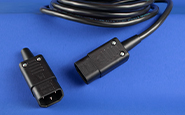Who Enforces International Safety Standards?
It is important to recognize that the publication of standards, along with enforcement and testing to these standards, is undertaken at the national level.
International documents are good guides for equipment designers, but the final interpretations and issuing the license that attests to the fact that you do meet the standard, always rests with the national test agencies. VDE (Germany), Intertek ETL SEMKO (Sweden), NEMKO (Norway), SGS FIMKO (Finland), KEMA (the Netherlands), CEBEC (Belgium), and Electrosuisse SEV (Switzerland) are some of the European agencies which write and test to their own standards. See Major International Testing Agencies for a listing of agencies.
In most cases, the national standard will simply be a translation into the local language of the applicable IEC or CENELEC document. Any national deviations will be noted in English at the front of the publication.
Each agency maintains a list of equipment which is subject to compulsory testing. This list varies somewhat from country to country, but usually consists of kitchen appliances, home entertainment electronics equipment, and other devices used in the home. Equipment which falls into these categories usually must be tested and approved before it can be marketed in the country.
Why Use Approved Primary Power Components?
Although it may be possible to get an entire piece of equipment approved by test agencies without using approved components, it will be easier, faster, and much less expensive when agency-approved primary power components with are used. There are four basic reasons for this:
- Many agencies reserve the right to test unapproved primary power components separately, causing delays and creating extra charges for testing.
- Extra component testing, particularly if not foreseen at the time of equipment submittal, causes additional communications and delays while additional component samples required for testing are provided. Furthermore, it generally knocks the equipment out of the test sequence until the required components arrive and have been tested successfully.
- Even if the unapproved components are accepted by the agency, they are given an “applications approval” which allows their use only in that specific application. This applications approval is not binding on the agency when the next product is submitted. Therefore, it is conceivable that a specific unapproved component will only be used on one model, in lower quantities than might otherwise be realized. This can result in higher component costs than if a single component could be used for several projects.
- An applications tested component (an unlicensed component) will be documented in the test report of your product, and you will become responsible to the agency for the construction of a part that you may have no control over. It is possible that the component manufacturer will change something on the part without your knowing about it, causing you to fail your factory inspection. You probably can get the problem sorted out, explained to the agency or corrected in time, but while that is happening your production may be shut down.
Therefore, the use of unapproved components is economically viable only in those cases in which production levels are very high, and where accurate component specifications and contractual vendor control is maintained.
With the exception of a small number of manufacturers of personal computers and related peripherals, home entertainment electronics equipment, and appliances, few producers of electronics equipment can economically justify the use of unapproved primary power components.
Please note that some test agencies do not require tests on primary power components before the piece of equipment is approved. Some agencies will accept testing performed by others. Still, other agencies do not require that any of the primary power components be previously tested; they simply test all of them in the circuit in which they are intended to be used.






